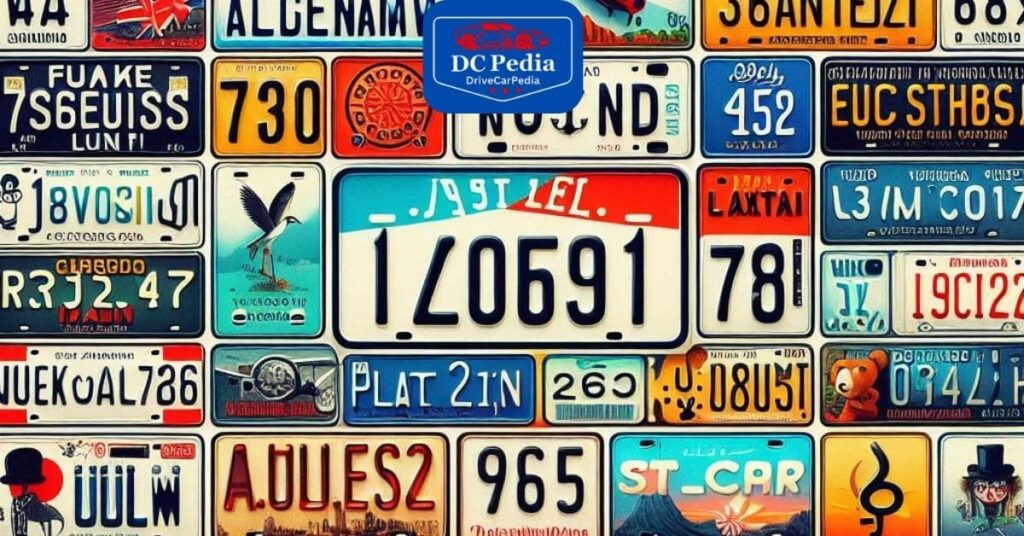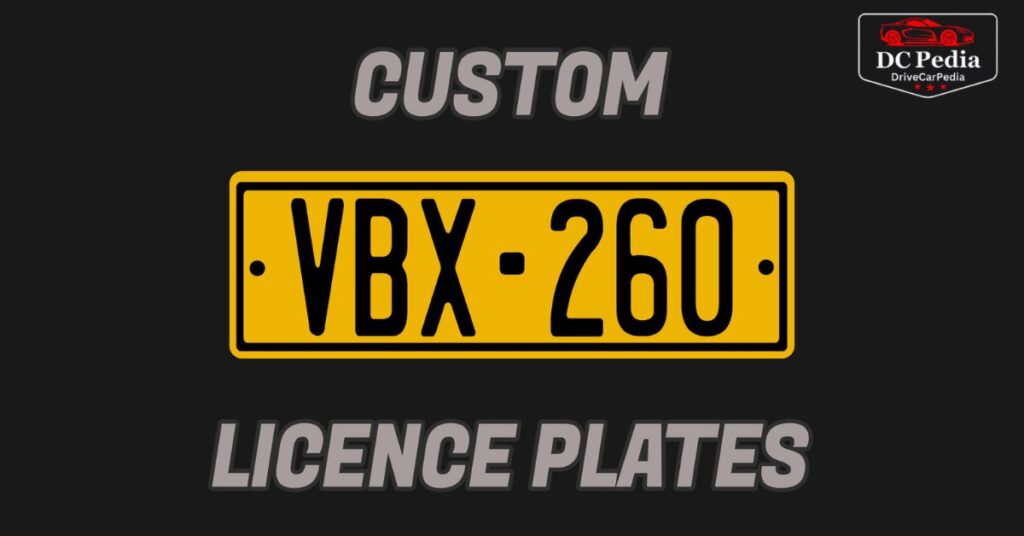PM stands for passenger motor vehicle on a standard license plate. It refers to private automobiles that are owned and primarily used for personal transportation like sedans, SUVs, trucks and vans. PM plates are issued for cars weighing less than a certain limit based on the state or province’s regulations.
Vehicles used for commercial purposes like taxis, buses, limousines or work trucks will not display a PM designation. Other special types of motor vehicles including motorcycles, recreational vehicles and commercial heavy trucks require unique license plate identifiers other than a basic PM classification.
The associated costs for PM license plate stickers in the state vary. For a detailed understanding, read on.
Exploring PM on License Plates
Many people see license plates with the letters “PM” on them but do not know what they mean. PM stands for “post meridiem” which refers to the afternoon. License plates with PM are often issued to vehicles that are only used during certain hours of the day.
There can be a few different reasons why a vehicle may have a PM license plate. Some commercial vehicles like taxis or limos that are only in service evenings and nights may receive a PM plate. This helps authorities identify hours of operation. Fleet vehicles used by companies after regular business hours can also be designated with PM plates.
Read This Blog: What Does Fp Mean On An Illinois License Plate?
What does “PM” mean on a license plate?
The letters “PM” stand for post meridiem, a Latin phrase meaning after midday or afternoon. In the 12-hour clock system, PM refers to the period of time from 12 noon until midnight. So a license plate containing PM would signify that the vehicle is approved for use during the afternoon/evening hours rather than all day.
The exact restrictions or purposes of a PM plate can vary between different states and jurisdictions. But in general, it identifies to law enforcement that the registered vehicle has a limited work schedule or is restricted to post-midnight operation for some reason such as commercial or fleet use. Having the PM clearly displayed makes roadside inspections more efficient.
Understanding the concept of a PM license plate
A PM license plate is a designation used by some vehicle registration offices to indicate a vehicle may only be operated during certain afternoon/evening hours. This type of plate is most commonly issued to commercial vehicles like taxis, limousines, or delivery trucks that provide services after normal daytime business hours.
Receiving a PM plate allows businesses to keep their vehicles in service later while avoiding higher registration fees for full-time use. It also helps authorities quickly recognize if a vehicle is being driven outside its approved timeframe. In some areas, highway use or parking restrictions may differ for PM plated cars versus those lacking such a limitation.
Exploring PM meanings in different states, including Florida
While the basic meaning of PM remains consistent, the exact restrictions and rules regarding post meridiem license plates can vary between jurisdictions. In Florida for example, PM plates are issued to limos, taxicabs, tow trucks and other for-hire vehicles operated 12pm-5am. These vehicles pay lower biennial registration taxes reflecting their part-time schedules.
While “PM” universally indicates an approved afternoon/nighttime schedule, specific regulations vary between jurisdictions. In California, PM plates restrict hours more narrowly from 6pm to 6am rather than noon to midnight.
Florida PM plates allow operation from midnight to 5am for taxis, limos and delivery vehicles. Maryland sometimes issues PM tags for shuttle buses working split day/night shifts. Texas reserves PM registration for commercial vehicles like tow trucks.
Understanding local definitions prevents mistakenly driving with an expired or misused PM plate outside allowed hours. For example, a California PM vehicle driving during the day could face penalties. Interpreting plates involves knowing individual state DMV rules for “PM”.
Florida PM License Plates: Meaning and Details
In Florida, a license plate with “PM” signifies a vehicle can only operate late at night. Specifically, PM plates allow driving from midnight to 5am. During this time, taxis and delivery vehicles provide important transportation services. The PM designation helps enforcement clearly identify vehicles that can legally operate during these off-peak hours.
These specialized plates are most commonly issued to limousines, taxis, and other transportation providers. By restricting hours of operation to late night and early morning, PM plates support efficient regulation of transportation businesses.
What does “PM” mean on a Florida license plate?
The letters “PM” are an abbreviation used on Florida license plates. Specifically, “PM” is short for post meridiem in Latin. Post meridiem refers to the period of time in the afternoon or evening, from noon until midnight. On Sunshine State plates, “PM” signifies a vehicle may only be driven between midnight and 5am.
This late night schedule allows transportation companies to pay reduced registration fees compared to 24/7 use. The PM designation makes clear to law enforcement which vehicles are permitted on roads during these approved hours.
Don’t miss reading this blog: License Plate Frames
How to obtain a PM tag in Florida
To get a PM plate, one must first contact their local county tax collector’s office. The tax office handles license plate applications. Documents required typically include proof of an approved business purpose like providing late night transport.
Once an application is reviewed and approved, the tax collector issues a new license plate marked with “PM.” This validates the vehicle for the restricted midnight to 5am timeframe on public roads.
Deciphering the meaning of PM on Florida license plates
The letters “PM” have a narrow meaning when seen on a Sunshine State registration. As an abbreviation for post meridiem, “PM” restricts a vehicle’s use to the period of midnight to 5am. This late night window allows for taxi, limousine and delivery driving.
Understanding the specific hours indicated by a “PM” plate prevents drivers from misinterpreting when these vehicles may legally operate. It also helps avoid violating the licensing of transportation businesses.
Costs associated with PM license plate stickers in Florida
Florida assesses lower annual fees for PM license plate renewals compared to standard registrations. Regular stickers are $61 but PM renewals are charged $47.50 only. Additional costs like registration taxes and reinstatement fees are also reduced for part-time plates.
Keeping reduced PM payments up to date ensures valid registration for the authorized midnight to 5am schedule. It prevents penalties that could arise from driving outside the designated hours, such as legal consequences for operators as described in the article “License Plate Number From Hit And Run – Now What?“. Failing to renew the PM registration on time could result in fines if the vehicle is caught on roads during unauthorized hours, as the registration would no longer be valid.
License Plate Codes: Beyond PM

License plates feature various alphanumeric codes providing key vehicle information. One common designation is “PM” indicating restricted hours of use. However, codes convey other details too.
In Florida and elsewhere, combinations like “CQ” or “EX” correlate with specific truck configurations. “E” or “X” plates in some states signify experimental use. Beyond conveying data to law enforcement and officials, codes influence rules of vehicle operation.
Common license plate codes
Across North America, standard passenger vehicle plates typically start with a letter followed by numbers. But other arrangements exist for particular categories.
Motorcycles often receive plates prefixed by “M.” Commercial plates may utilize prefixes like “TX” for taxis or start with “B” or “W” for buses. Tow trucks and some professional services receive plates marked with “T.” Understanding prevalent codes facilitates efficient vehicle identification.
Legal implications of license plate codes
Specified by registration authorities, plate codes legally regulate aspects of vehicle use. “PM” confines hours of driving. “TX” limits passenger transport to registered taxi business activities.
Non-standard configurations also affect insurance requirements and eligibility for commercial permits. Operating a vehicle outside limitations tied to its plate code violates licensing. Legal codes underpin infrastructure of road transport management across jurisdictions.
International variations in license plate coding
While some codes like “PM” hold meaning in multiple countries, formats differ internationally. plates. European nations assign plates by district rather than following set patterns.
Asian countries commonly delegate a block of numbers representing the year and month to simplified two-letter codes denoting the place of registration. International travel calls for recognizing divergent foreign license plate structures and their implications.
Agencies responsible for license plate coding
Within states, specific transportation or motor vehicle departments take charge of plate administration and allocate blocks of numbers and letters.
Organizations like the American Association of Motor Vehicle Administrators further standardizes some conventions across North America. On a federal level, the National Highway Traffic Safety Administration provides optional guidance and support to local entities.
Potential changes in license plate coding systems
With emerging vehicle technologies, existing plate frameworks may one day require modernizing. Some envision adapting coding to self-driving vehicles or including wireless identifiers for automated enforcement.
But for simplicity and seamless cooperation across borders, most experts argue the current balance of standardized and individually run systems has worked reasonably well. Major changes would need careful evaluation to avoid disruption.
Decoding License Plates: PM and Beyond

License plates display various symbols and alphanumeric codes providing important vehicle information to authorities. One common designation is “PM”, indicating restrictions on hours of use. However, plates feature additional markings requiring decoding.
Symbols like validation stickers show licensing status. Specialized stickers or prefixes also denote vehicle type. Interpreting such codes reveals multiple layers of regulatory meaning in plates.
Understanding license plate symbols
Plates prominently feature validation stickers showing month and year of registration renewal. Stickers like these prove valid licensing to authorities. Other indicators like (“P”) on Canadian plates note provincial ownership. Interpreting these symbols properly adheres to licensing protocols.
Origins and historical evolution of license plate abbreviations
Early twentieth century plates initially included basic identification of vehicles with letters and numbers. As registration expanded, uniform designs and allocation of coding emerged. Abbreviations then developed to efficiently manage commercial fleets and specialty vehicles. Conventions like “PM” date back decades in origin.
PM’s significance in the context of license plates
“PM” denotes an approved schedule restricting hours of use to afternoon and nighttime. Derived from the Latin “post meridiem”, it limits driving hours on many commercial and livery plates. For fleets and taxis, “PM” allows late shifts while paying lower annual taxes than 24/7 registration. It remains integral to interpreting many license plates globally.
Historical evolution of license plate markings
Following standardized early plate designs incorporating state/county identification, specialized markings developed. Motorcycle, commercial and government plates received new identifying prefixes. International styles then aligned in the 1900s for improved cooperation. Markings continue modernizing with digital variants and database registration.
Decoding alphanumeric combinations on license plates
Beyond simply conveying make and model, letter-number combinations relay other registration details according codes. Combinations established by DMV protocols indicate a vehicle’s registration class, origins and restrictions on certain plates. Interpreting local formats helps recognize permitted vehicle details for authorities.
PM and Vehicle Registration: Insights

The letters “PM” found on some license plates indicate approved hours of use. As a core plate feature, “PM” aids authorities in vehicle oversight. Understanding basic plate functions provides useful registration context.
Alphabets and numerals combined on plates uniquely identify vehicles for monitoring road activity. Specialized markings further assist management of diverse transportation networks.
PM’s role in vehicle identification
When seen on plates, “PM” indicates a vehicle may only operate during certain hours according to legal registration. Its meaning stemming from Latin words for afternoon, “PM” restricts schedules to support transportation businesses. This abbreviation crucially links vehicles to permitted activity times.
License plates and their practical use
Whether displaying government-issued plates or temporary permits, all road vehicles require approved registration for legal operation. Permanent plates bearing unique identifying codes serve registration and enforcement functions year-round.
Unique features of license plate abbreviations
Beyond “PM”, plates employ other prefixes and suffixes like “TX” for commercial vehicles. These abbreviations encode details into succinct alphabets facilitating mobile identification. Interpreting plates involves recognizing locale-specific abbreviation conventions.
Permanent registration and its meaning
Regular registration provides comprehensive licensing allowing unrestricted vehicle use following applicable laws. Specialized plates with signs like “PM” categorize vehicles under limited provisions for a set schedule.
Interpreting specialized license plate markings
Carefully examining plates reveals registration classifications beyond basic make and model. Special markings such as “PM” indicate hours of approved use through protocols understood by authorities. Internationally, analogous regional signifiers exist requiring similar decoding attentiveness.
Technological Advances in License Plates
License plate technology is evolving. New materials and digital features enhance identification. From basic metal designs, plates now use sophisticated encryption.
Automatic tolling relies on optical scanning of encrypted plates. Law enforcement leverages camera networks and database lookups by license numbers. Technologies linked to plates revolutionize transportation management.
Evolution of license plate identification technology
Early identification methods used simple markings. Advancements included restrictive labels and adhesives resistant to removal. Electronic tags current supplement plates with radio signals for tracking.
Mobile apps interface with government records, allowing storage of plate data on devices. Connected vehicles in future may transmit plate IDs via internet protocols. Technology progresses identification.
PM’s significance in modern vehicle identification
The designation “PM” remains important in current vehicle tracking. Featured on specialized commercial plates for restricted schedules, “PM” alerts authorities through database searches.
Modern technologies uncover driving outside designated hours through traffic camera metadata of such plates. Its meaning thus remains equally significant despite changing identification methods.
Understanding specialized license plate markings
Beyond make and model, license plates contain valuable registration information. Markings such as “PM” signify Hours approved for vehicle operation in accordance with alphanumeric protocols.
Careful examination of plate markings, whether physical or digital readouts, helps establish a vehicle’s legal parameters for operation.
Unraveling the Mystery: Permanent License Plates
Permanent license plates provide comprehensive registration allowing year-round street use. In contrast, certain vehicle categories carry restricted, often temporary plates.
Differences in plate types stem from road usage limitations and insurance regulations. Proper recognition of registration classes facilitates regulatory compliance.
What is a permanent license plate?
Permanent plates feature government-issued identification sticking with a vehicle indefinitely through annual validation stickers. Renewed registration confers full driving permissions within legal bounds.
What does PP mean on a license plate in California?

I do not have enough information to determine what “PP” would mean on a license plate in California. License plate abbreviations and designations can vary between states and have different meanings. Some possibilities for what “PP” could stand for include:
- Preferential parking (for disabled access)
- Permit plate (a temporary registration plate)
- Private passenger/personal use vehicle
- Pilot program marker
Without context from California’s DMV on assigned abbreviations, the specific meaning of “PP” on a license plate in that state cannot be definitively stated. The DMV website or manual would need to be consulted for the official designation. In general, license plate codes can provide important registration details but must be interpreted according to individual state protocols.
Final Thoughts
Permanent plates signify full registration status. They allow unfettered driving at all times barring odd-even rules or other location-specific regulations. Renewing validation stickers each year maintains the plate’s registration powers.
With permanent plates come full driving freedoms within legal confines. In contrast, plates marked with abbreviations like “PM”, which stands for “post meridiem” and signifies a vehicle’s approved hours of operation from noon to midnight, as explained in the article “What Does Pm Mean On A License Plate“, come with restricted use only during certain hours.
Frequently Asked Questions
How much does a permanent tag cost in Florida?
In Florida, an annual renewal fee for a standard permanent license plate is approximately $61.
How To Report Stolen License Plate?
To report a stolen license plate in California, you should promptly file a police report with local law enforcement.
How do I get my license at 18 in Florida?
To get your license at 18 in Florida, complete driver’s education, pass written and road tests, and hold a learner’s permit for six months before getting an intermediate license.









